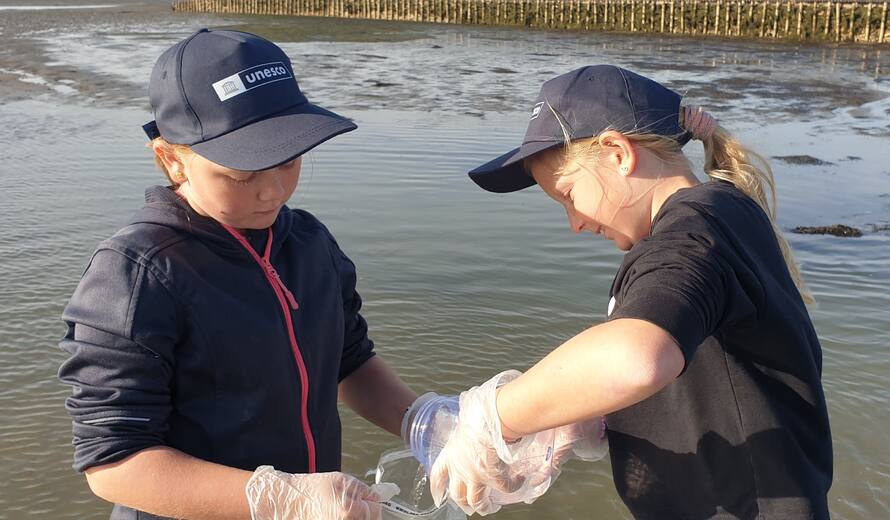
Water Conservation: 7 Simple Ways to Save Water at Home and in Your Business
Water is one of our most precious resources, yet it is often wasted without thought. ...

Nearly 100 youths from local schools collected environmental DNA (eDNA) samples across the Wadden Sea World Heritage area as part of a global UNESCO initiative to better understand how climate change is affecting marine biodiversity.
Ocean species shed DNA into the water around them in the form of genetic material from waste, mucus or cells. Just one liter of water can determine the biodiversity richness in a given area and may contain hundreds of species.
Students collected eDNA samples at five locations across the Wadden Sea World Heritage area, including Esbjerg (Denmark), Nordstrand, Neuwerk and Wilhelmshaven (Germany), and Texel (Netherlands). The citizen-science sampling initiative was coordinated in collaboration with the Danish Wadden Sea National Park, the German Wadden Sea National Park Authorities Schleswig-Holstein, Hamburg and Lower Saxony and the Dutch Waddenvereniging.
The Wadden Sea is the first of 25 UNESCO World Heritage marine sites where eDNA sampling campaigns are being rolled out between September 2022 and April 2023.
“This is an innovative approach that we are honored to be part of”, says Bernard Baerends, Executive Secretary of the Common Wadden Sea Secretariat. “As one Wadden Sea, we work together to support the eDNA expeditions initiative, and thereby the global network, sharing a snapshot of marine life in our World Heritage site. The citizen science approach is an ideal opportunity to inspire and educate the next generation of ocean scientists.”
Environmental DNA is an innovative science method that can be used in monitoring and evaluating ocean biodiversity without the need to actually extract organisms from their environment. The scientific results are expected to provide a one-off biodiversity snapshot across marine World Heritage sites, and for fish species particularly. Combined with IPCC heat scenario projections, the initiative will help inform potential geographic and distribution shifts of fish species as a result of climate change.
The initiative is a joint collaboration between UNESCO’s Intergovernmental Oceanographic Commission and the World Heritage Center, and is made possible through the support of the Government of Flanders (Belgium). The results are expected end 2023 and will be publicly available on the world’s largest open source Ocean Biodiversity Information System (OBIS). The initiative marks the first global action for marine World Heritage under the United Nations Decade of Ocean Science for Sustainable Development (2021-2030).
اترك تعليقا